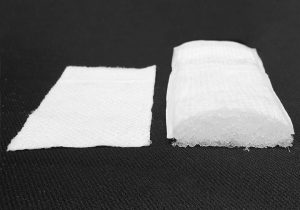In the ever-evolving field of materials science, few innovations have had as profound an impact as superabsorbent polymers (SAPs). These remarkable materials, also known as water-absorbent polymers, hydrogel polymers, and water-swellable polymers, possess the extraordinary ability to absorb and retain large amounts of water relative to their own mass. This unique property has opened up a myriad of applications across various industries, from agriculture to personal hygiene products. In this blog post, we’ll dive into the fascinating world of SAPs, exploring their properties, applications, and the science behind their incredible absorbency.

What are Polímeros superabsorbentes (SAP)?
Superabsorbent polymers are a type of polymer that can absorb and retain extremely large amounts of liquid relative to their mass. When these polymers come into contact with water, they can swell and retain the liquid, forming a gel-like substance. This characteristic makes them invaluable in a wide range of applications. SAPs are typically made from acrylic acid or its salts (such as sodium acrylate) and are cross-linked to form a network that can trap water molecules.
Properties of Superabsorbent Polymers
- Alta absorbencia: One of the defining features of SAPs is their ability to absorb water up to several hundred times their own weight.
- Retention Capacity: Once absorbed, the water is retained within the polymer network, preventing leakage even under pressure.
- Biocompatibility: Many SAPs are non-toxic and biocompatible, making them suitable for use in medical and personal care products.
- Customizable: The properties of SAPs can be tailored by modifying their chemical structure, enabling specific functionalities for different applications.
Aplicaciones de los polímeros superabsorbentes
- Agricultura: In agriculture, SAPs are used to improve soil moisture retention, reducing the need for frequent irrigation and enhancing crop yield, especially in arid regions.
- Personal Hygiene Products: Perhaps the most well-known application is in disposable diapers and sanitary products, where SAPs are used to absorb and lock away moisture, keeping the user dry and comfortable.
- Ámbito médico: SAPs are used in wound dressings to manage exudate, maintaining a moist environment that promotes healing while preventing infection.
- Construcción: In construction, SAPs are added to concrete mixtures to improve curing and reduce cracking caused by shrinkage.
- Environmental Protection: SAPs are used in products designed to clean up spills, including hazardous materials, by absorbing and containing the spill.
How Do SAPs Work?
The mechanism behind the impressive water absorption of SAPs lies in their chemical structure. The polymer chains contain hydrophilic (water-attracting) groups such as carboxyl groups (-COOH). When SAPs come into contact with water, these groups ionize to form carboxylate anions (-COO-), which attract water molecules through hydrogen bonding and osmotic pressure. The cross-linked network structure of the polymer prevents the chains from dissolving, allowing the polymer to swell and form a gel, trapping the water within.
Innovations and Future Prospects
The field of superabsorbent polymers continues to advance, with ongoing research focused on enhancing their performance and expanding their applications. Innovations include the development of bio-based SAPs derived from renewable resources, which offer environmental benefits over traditional petroleum-based polymers. Additionally, smart SAPs that respond to environmental stimuli such as pH or temperature changes are being explored for advanced medical and environmental applications.
Conclusión
Superabsorbent polymers are a testament to the incredible potential of polymer science. Their ability to absorb and retain vast amounts of water has revolutionized industries and improved countless products. As research and development continue, we can expect to see even more innovative applications and environmentally friendly alternatives emerge, further solidifying the importance of SAPs in our daily lives and industrial processes.
Whether it’s helping farmers conserve water, keeping babies dry, or healing wounds, superabsorbent polymers are an essential part of modern technology, demonstrating the profound impact that a single material can have across multiple domains.

